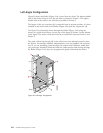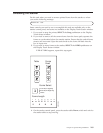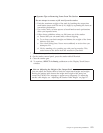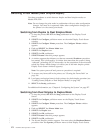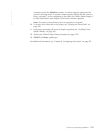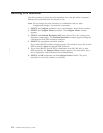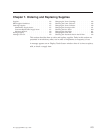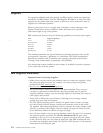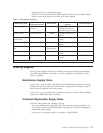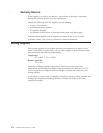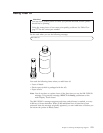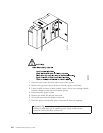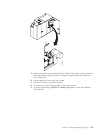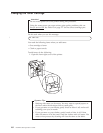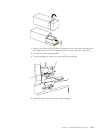
Supplies
For optimum reliability and print quality use IBM supplies, which are engineered
specifically for IBM printers. Use the “IBM Supplies Worksheet” to help you order
supplies for the printer before the system is delivered, and to maintain a stock of
supplies for continuous operation.
When a printer runs low on a supply item, it displays a status message on the
Display Touch Screen screen, sounds an alarm, and turns on an operator
intervention light on top of the printer.
IBM recommends that you keep the following quantities on hand per print engine:
Item Suggested Quantity
Toner 30 cartridges
Developer mix 4 bottles
Fuser oil 4 bottles
Oiler belt 2 belts
Fine filter 2 filters
Splicing tape 72 rolls
The estimated quantities are approximations for planning purposes only, and do
not represent a warranty, a guarantee, or a minimum. The actual consumption
depends on variables such as machine toner settings, job-stream percent toner
coverage, form characteristics, temperature, and humidity.
Also ensure that a toner-certified vacuum cleaner is available for printer operators
to use when they clean the printer.
IBM Supplies Worksheet
Important Notes Concerning Supplies:
v Make sure to use the correct part numbers when you order new supplies. Using
the wrong developer or toner, for example, can cause serious print quality
problems and force a service call.
v Do not reuse waste toner or developer mix.
v The yields listed in Table 15 on page 177 are approximations. They are not a
warranty or guarantee of minimum life; they are provided only to assist in
supplies planning. Analyze your actual usage figures to determine how much of
each supply item to stock.
v Toner yield is affected by several factors, including print coverage, contrast
setting, form type, and environment.
v The Fine Filter processing yield is based on 4 square inches of toner coverage
per foot of forms with the printer control panel Contrast switch in the center
(4) position. More dense applications, such as extensive bar codes, images, solid
area fill, or printing with a higher Contrast setting can expect to achieve yields
lower than those achieved with the average text page.
v Your CE may install an oil pan and an absorbent pad in the pan if it is necessary
for optimum printer operation. The Oil Pan Absorbent Pad life span varies
according to the way you run the printer. In general, the more often the printer
is idle, the more often you may need to replace the pad. IBM recommends that
you check the absorbent pad weekly. The InfoPrint 3000 Operator’s Guide contains
instructions for checking the pad.
176 InfoPrint 3000 Operator’s Guide
|
|
|



